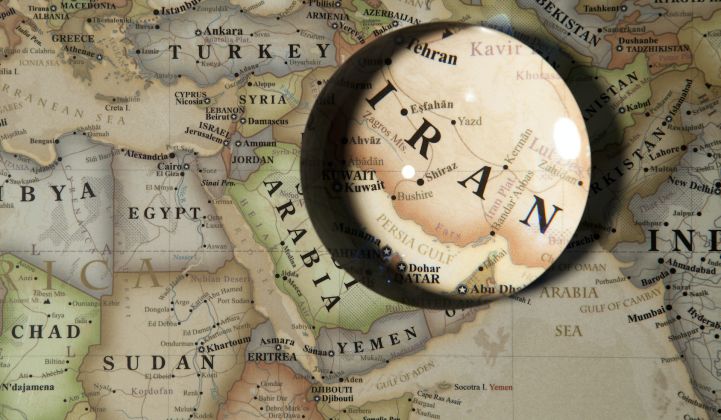Solar firms rushing into Iran’s nascent renewable energy market may face challenges due to lingering trade restrictions.
In June, for example, the Financial Action Task Force (FATF), an international anti-money-laundering body, opted to keep Iran on a blacklist of high-risk territories, although counter-measures against the country have been lifted for a year.
“If Iran fails to improve its record on money laundering and financing terrorism as promised, the FATF's call for vigorous counter-measures will be reinstated,” Reuters reported. “If there is improvement, the task force will consider further positive steps.”
Although the U.S. has eased trade sanctions on Iran, the country does not yet have access to the U.S. financial system, which has made Western banks wary of dealing with the market.
Elsewhere, the Army of the Guardians of the Islamic Revolution, a branch of Iran’s armed forces, remains subject to international sanctions and is omnipresent in most Iranian economic sectors, including construction and energy.
These remaining trade restrictions “could be a problem, particularly for U.S. firms,” said Ali Izadi-Najafabadi, a renewables expert at Bloomberg New Energy Finance. “In particular, financing can be challenging unless backed by development banks or an institution with no or limited exposure to the U.S. banking system. Chinese firms are likely to have fewer problems.”
Nevertheless, the reinstatement of trade with Iran in December 2015 boosted foreign direct investment (FDI) -- placing Iran only behind the United Arab Emirates and Saudi Arabia. The country bagged 22 FDI projects in the first quarter of this year, compared to nine in the whole of 2015 and eight in 2014.
Solar firms have been eyeing the Iranian market after the Renewable Energy Organization of Iran, or "SUNA," launched a feed-in tariff (FIT) program for PV.
The FITs for solar power announced this year range from IRR 3,200 (USD $0.11) per kilowatt-hour for plants over 30 megawatts to IRR 4,900 (USD $0.16) for projects of less than 10 megawatts. Those in between will get a FIT of IRR 4,000 (USD $0.13) per kilowatt-hour.
Based on this, the German Solar Association (BSW) estimates Iranian solar projects could achieve internal rates of return of between 30 percent and 36 percent.
But this calculation assumes projects have access to 6 percent interest financing from the National Development Fund of Iran, Iran's sovereign wealth fund, to avoid the impact of high inflation rates.
“There are big challenges to PV investments that need to be overcome,” conceded BSW-Solar in a report. “The macroeconomic situation of the country and universal electricity subsidies constitute a difficult framework for PV development.”
BSW-Solar still concluded there was a huge sales opportunity for German solar developers in Iran. According to Bloomberg, an unnamed German firm already agreed to fund and build around 2.75 gigawatts of solar last November.
Since then, numerous Italian firms have announced plans to build solar plants in the country.
Building on longstanding close commercial ties between Italy and Iran, Italian solar players Genesis, Denikon and Carlo Maresca signed memorandums of understanding for a total of 1.5 gigawatts of solar.
And Iran’s Tasnim News Agency in May claimed China’s Shanxi International Energy Group was set to build 600 megawatts of PV capacity in the country.
Despite these announcements, no projects have been awarded a FIT under the SUNA program. Furthermore, some observers admit Iran is unlikely to be an easy market to work in, even in the absence of trade barriers.
“There are a couple of other challenges unrelated to remaining sanctions,” cautioned BNEF Solar Insight Manager Jenny Chase. “The FIT is denominated in local currency, which means significant foreign exchange risk. Also, there are anecdotal stories that the Ministry of Power has at times not fulfilled payment obligations on time. Both of these challenges are, of course, very common to most emerging markets."
In addition, said Josefin Berg, senior analyst for solar demand at IHS Technology: “It’s not the poorest country, but we still don’t know how they will pay for FITs and projects. It’s definitely a difficult country to do business in.”



